-
 Bitcoin
Bitcoin $94,178.2696
-0.16% -
 Ethereum
Ethereum $1,797.8459
-0.09% -
 Tether USDt
Tether USDt $0.9999
-0.01% -
 XRP
XRP $2.1034
-2.70% -
 BNB
BNB $597.2445
1.54% -
 Solana
Solana $144.2857
-0.44% -
 USDC
USDC $0.9999
0.00% -
 Dogecoin
Dogecoin $0.1677
-1.93% -
 TRON
TRON $0.2479
-0.33% -
 Cardano
Cardano $0.6552
-3.32% -
 Sui
Sui $3.3008
-0.91% -
 Chainlink
Chainlink $13.4491
-3.79% -
 Avalanche
Avalanche $19.5090
-3.13% -
 UNUS SED LEO
UNUS SED LEO $8.6562
-4.70% -
 Stellar
Stellar $0.2558
-4.51% -
 Toncoin
Toncoin $2.9790
-1.37% -
 Shiba Inu
Shiba Inu $0.0...01250
-2.47% -
 Hedera
Hedera $0.1719
-2.76% -
 Bitcoin Cash
Bitcoin Cash $351.7733
-1.12% -
 Hyperliquid
Hyperliquid $20.0428
-1.08% -
 Litecoin
Litecoin $82.0553
-4.40% -
 Polkadot
Polkadot $3.8710
-2.98% -
 Dai
Dai $1.0000
0.00% -
 Monero
Monero $274.4029
-0.45% -
 Bitget Token
Bitget Token $4.2956
-0.11% -
 Ethena USDe
Ethena USDe $1.0004
0.00% -
 Pi
Pi $0.5861
-0.74% -
 Pepe
Pepe $0.0...07804
-4.97% -
 Bittensor
Bittensor $368.2951
5.54% -
 Uniswap
Uniswap $4.8977
-2.94%
Global currency wallet address
When selecting a global currency wallet address, prioritize security, transaction fees, supported currencies, customer support, and best practices for protecting your funds.
Jan 12, 2025 at 08:07 pm
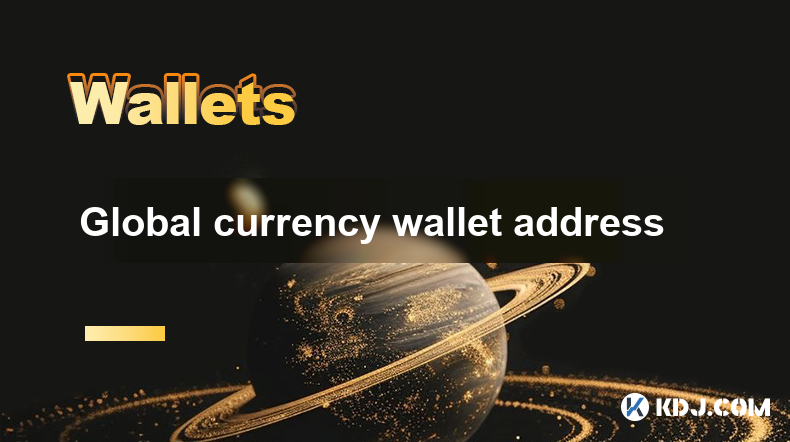
How to Choose the Right Global Currency Wallet Address
Key Points:
- Global currency wallet addresses enable you to store, send, and receive cryptocurrencies from anywhere in the world.
- Consider factors such as security, transaction fees, supported currencies, and customer support.
- Research the reputation of different exchanges and wallet providers before choosing one.
- Understand the different types of wallet addresses available, such as centralized and decentralized.
- Follow best practices for protecting your wallet address and maintaining the security of your funds.
1. Security
- Centralized exchanges: Store your funds on the exchange's servers, which are managed by the company. This can be less secure than decentralized wallets, as the exchange may be vulnerable to hacks or phishing attacks.
- Decentralized exchanges: Allow you to keep your funds in your own custody, without relying on a third party. This is generally more secure than centralized exchanges, as your funds are not held by any single entity.
- Hardware wallets: Store your private keys offline on a physical device. This is the most secure option for storing cryptocurrencies, as the private keys are never exposed to the internet.
2. Transaction Fees
- Centralized exchanges: May charge fees for deposits, withdrawals, and trades. These fees can vary depending on the exchange and the cryptocurrency involved.
- Decentralized exchanges: Typically charge lower fees than centralized exchanges, as they do not have the same overhead costs. However, gas fees (transaction fees on the blockchain) can still be significant, especially during periods of high network congestion.
- Hardware wallets: Generally do not charge any transaction fees. However, you will need to pay gas fees when sending or receiving cryptocurrencies from the hardware wallet.
3. Supported Currencies
- Centralized exchanges: Support a wide range of cryptocurrencies, including the most popular coins and tokens.
- Decentralized exchanges: Typically support fewer cryptocurrencies than centralized exchanges, as they are more focused on specific niches or ecosystems.
- Hardware wallets: Support a limited range of cryptocurrencies, as they are designed for security first and foremost.
4. Customer Support
- Centralized exchanges: Typically offer 24/7 customer support, as they have the resources to provide dedicated customer service teams.
- Decentralized exchanges: May have limited customer support, as they are often operated by small teams or communities.
- Hardware wallets: Typically offer support through documentation, forums, and email, as they do not have the same infrastructure as centralized exchanges.
5. Best Practices for Protection
- Use strong passwords: Choose complex passwords that are difficult to guess.
- Enable two-factor authentication: Add an extra layer of security by requiring a code sent to your phone or email for each login attempt.
- Store your private keys securely: Keep your private keys offline and never share them with anyone.
- Be aware of phishing scams: Do not click on suspicious links or open attachments from unknown senders.
- Use a hardware wallet for large amounts: If you store a significant amount of cryptocurrency, consider using a hardware wallet for increased security.
FAQs
Q: What is a cryptocurrency wallet address?
A: A cryptocurrency wallet address is a unique string of characters that allows you to send and receive cryptocurrencies from other users.
Q: Are all cryptocurrency wallet addresses the same?
A: No, there are different types of wallet addresses, such as centralized exchange addresses, decentralized exchange addresses, and hardware wallet addresses.
Q: How do I choose the right global currency wallet address?
A: Consider factors such as security, transaction fees, supported currencies, and customer support when choosing a wallet address.
Q: What are the risks of using a cryptocurrency wallet address?
A: The main risks include hacking, phishing, and losing your private keys. It is important to follow best practices for protection to minimize these risks.
Q: What is the best way to store large amounts of cryptocurrency?
A: The best way to store large amounts of cryptocurrency is to use a hardware wallet. Hardware wallets are designed for security and keep your private keys offline.
Disclaimer:info@kdj.com
The information provided is not trading advice. kdj.com does not assume any responsibility for any investments made based on the information provided in this article. Cryptocurrencies are highly volatile and it is highly recommended that you invest with caution after thorough research!
If you believe that the content used on this website infringes your copyright, please contact us immediately (info@kdj.com) and we will delete it promptly.
- Dogecoin (DOGE) Price Rebounds Sharply From April Lows, Gains 38% and Reignite Bullish Forecasts
- 2025-05-06 10:10:12
- Ruvi (RUVI) Has Captured the Market's Attention with Rumors of Major Acquisitions and the Unlocking of One Billion XRP from Escrow
- 2025-05-06 10:10:12
- House Financial Services Committee's Maxine Waters will block efforts to hold a joint hearing on market structure discussion draft bill
- 2025-05-06 10:05:11
- Pepeto Promises the Return of Altcoin Season as Bitcoin (BTC) Slows
- 2025-05-06 10:05:11
- India proposes zero-for-zero tariffs on pharmaceuticals, auto parts and steel to break Trump Tariff War deadlock
- 2025-05-06 10:01:53
- Trump’s meme coin business racks up fees as buyers jump at the chance for access to the president
- 2025-05-06 10:01:53
Related knowledge
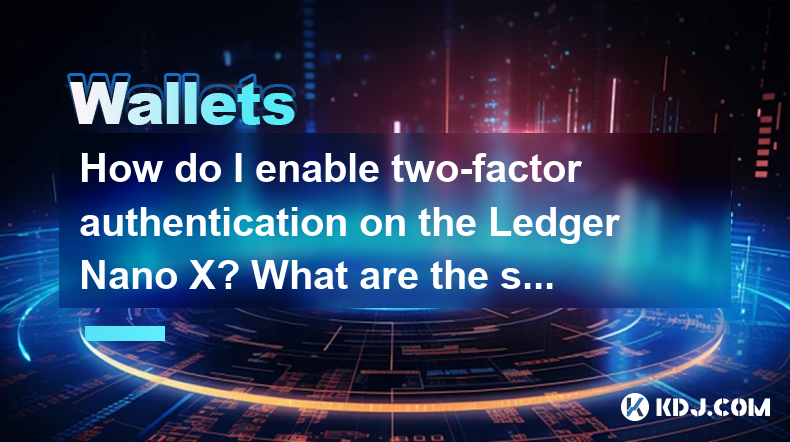
How do I enable two-factor authentication on the Ledger Nano X? What are the security options?
May 02,2025 at 09:49pm
Enabling two-factor authentication (2FA) on your Ledger Nano X is a critical step in securing your cryptocurrency assets. The Ledger Nano X offers robust security options that enhance the protection of your digital wealth. In this article, we will guide you through the process of enabling 2FA on your Ledger Nano X and explore the various security featur...
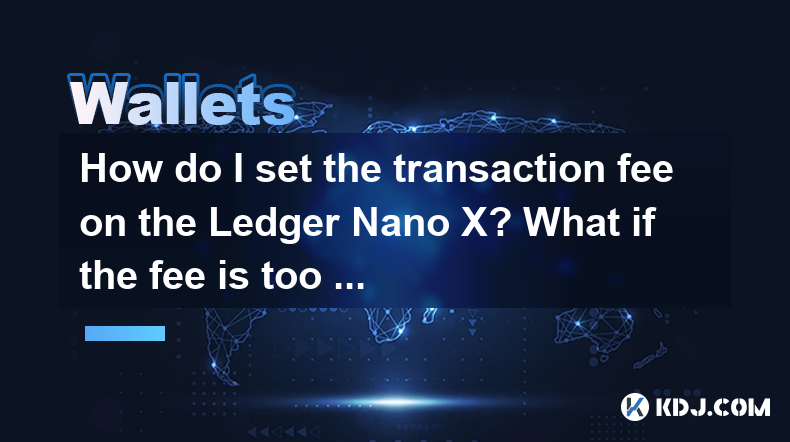
How do I set the transaction fee on the Ledger Nano X? What if the fee is too high?
May 05,2025 at 09:21pm
Setting the transaction fee on your Ledger Nano X is an essential part of managing your cryptocurrency transactions efficiently. The transaction fee directly impacts how quickly your transaction is processed and confirmed on the blockchain. In this guide, we will walk you through the steps to set the transaction fee on your Ledger Nano X, and what to do...
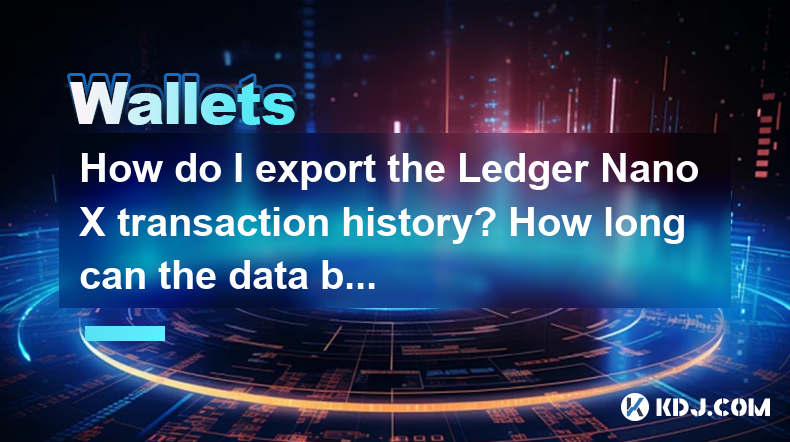
How do I export the Ledger Nano X transaction history? How long can the data be saved?
May 04,2025 at 07:21am
Introduction to Ledger Nano X and Transaction HistoryThe Ledger Nano X is a hardware wallet designed to store your cryptocurrency safely. It supports a wide range of cryptocurrencies and offers robust security features. One of the essential aspects of managing your cryptocurrencies is keeping track of your transaction history. The Ledger Nano X allows y...
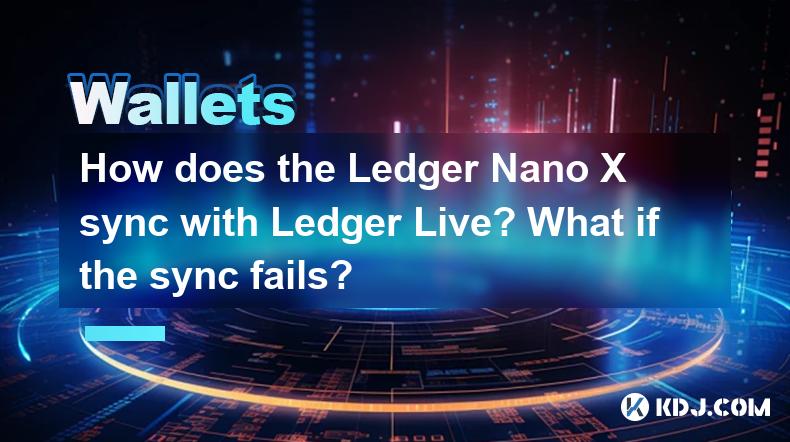
How does the Ledger Nano X sync with Ledger Live? What if the sync fails?
May 04,2025 at 12:07pm
The Ledger Nano X is a popular hardware wallet that allows users to securely manage their cryptocurrency assets. One of the key features of the Ledger Nano X is its ability to sync with the Ledger Live application, which provides a user-friendly interface for managing your crypto portfolio. In this article, we will explore how the Ledger Nano X syncs wi...
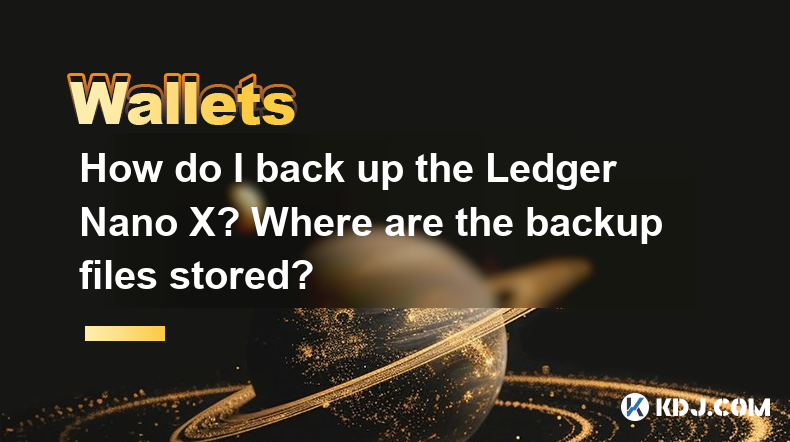
How do I back up the Ledger Nano X? Where are the backup files stored?
May 06,2025 at 09:07am
Introduction to Backing Up Your Ledger Nano XBacking up your Ledger Nano X is crucial for safeguarding your cryptocurrencies. A backup ensures that you can recover your funds if your device is lost, stolen, or damaged. In this article, we will delve into the step-by-step process of backing up your Ledger Nano X, as well as where the backup files are sto...
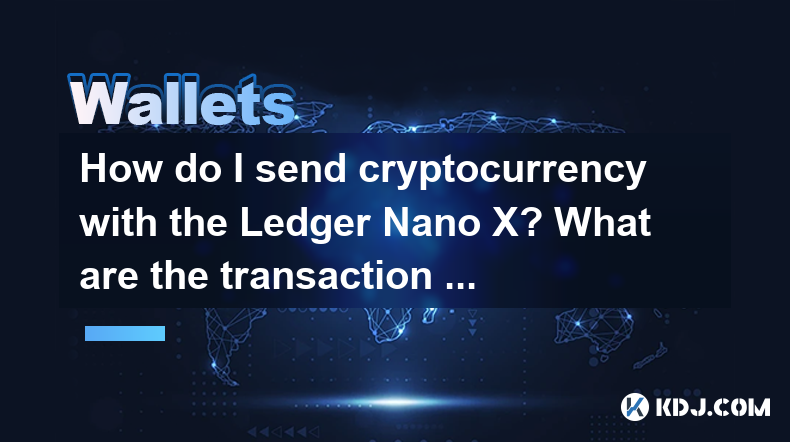
How do I send cryptocurrency with the Ledger Nano X? What are the transaction confirmation steps?
May 03,2025 at 05:01am
Sending cryptocurrency using the Ledger Nano X involves a series of steps that ensure the security and accuracy of your transactions. This process is designed to be user-friendly while maintaining the high level of security that Ledger devices are known for. In this article, we will guide you through the process of sending cryptocurrency with the Ledger...

How do I enable two-factor authentication on the Ledger Nano X? What are the security options?
May 02,2025 at 09:49pm
Enabling two-factor authentication (2FA) on your Ledger Nano X is a critical step in securing your cryptocurrency assets. The Ledger Nano X offers robust security options that enhance the protection of your digital wealth. In this article, we will guide you through the process of enabling 2FA on your Ledger Nano X and explore the various security featur...

How do I set the transaction fee on the Ledger Nano X? What if the fee is too high?
May 05,2025 at 09:21pm
Setting the transaction fee on your Ledger Nano X is an essential part of managing your cryptocurrency transactions efficiently. The transaction fee directly impacts how quickly your transaction is processed and confirmed on the blockchain. In this guide, we will walk you through the steps to set the transaction fee on your Ledger Nano X, and what to do...

How do I export the Ledger Nano X transaction history? How long can the data be saved?
May 04,2025 at 07:21am
Introduction to Ledger Nano X and Transaction HistoryThe Ledger Nano X is a hardware wallet designed to store your cryptocurrency safely. It supports a wide range of cryptocurrencies and offers robust security features. One of the essential aspects of managing your cryptocurrencies is keeping track of your transaction history. The Ledger Nano X allows y...

How does the Ledger Nano X sync with Ledger Live? What if the sync fails?
May 04,2025 at 12:07pm
The Ledger Nano X is a popular hardware wallet that allows users to securely manage their cryptocurrency assets. One of the key features of the Ledger Nano X is its ability to sync with the Ledger Live application, which provides a user-friendly interface for managing your crypto portfolio. In this article, we will explore how the Ledger Nano X syncs wi...

How do I back up the Ledger Nano X? Where are the backup files stored?
May 06,2025 at 09:07am
Introduction to Backing Up Your Ledger Nano XBacking up your Ledger Nano X is crucial for safeguarding your cryptocurrencies. A backup ensures that you can recover your funds if your device is lost, stolen, or damaged. In this article, we will delve into the step-by-step process of backing up your Ledger Nano X, as well as where the backup files are sto...

How do I send cryptocurrency with the Ledger Nano X? What are the transaction confirmation steps?
May 03,2025 at 05:01am
Sending cryptocurrency using the Ledger Nano X involves a series of steps that ensure the security and accuracy of your transactions. This process is designed to be user-friendly while maintaining the high level of security that Ledger devices are known for. In this article, we will guide you through the process of sending cryptocurrency with the Ledger...
See all articles




















































































